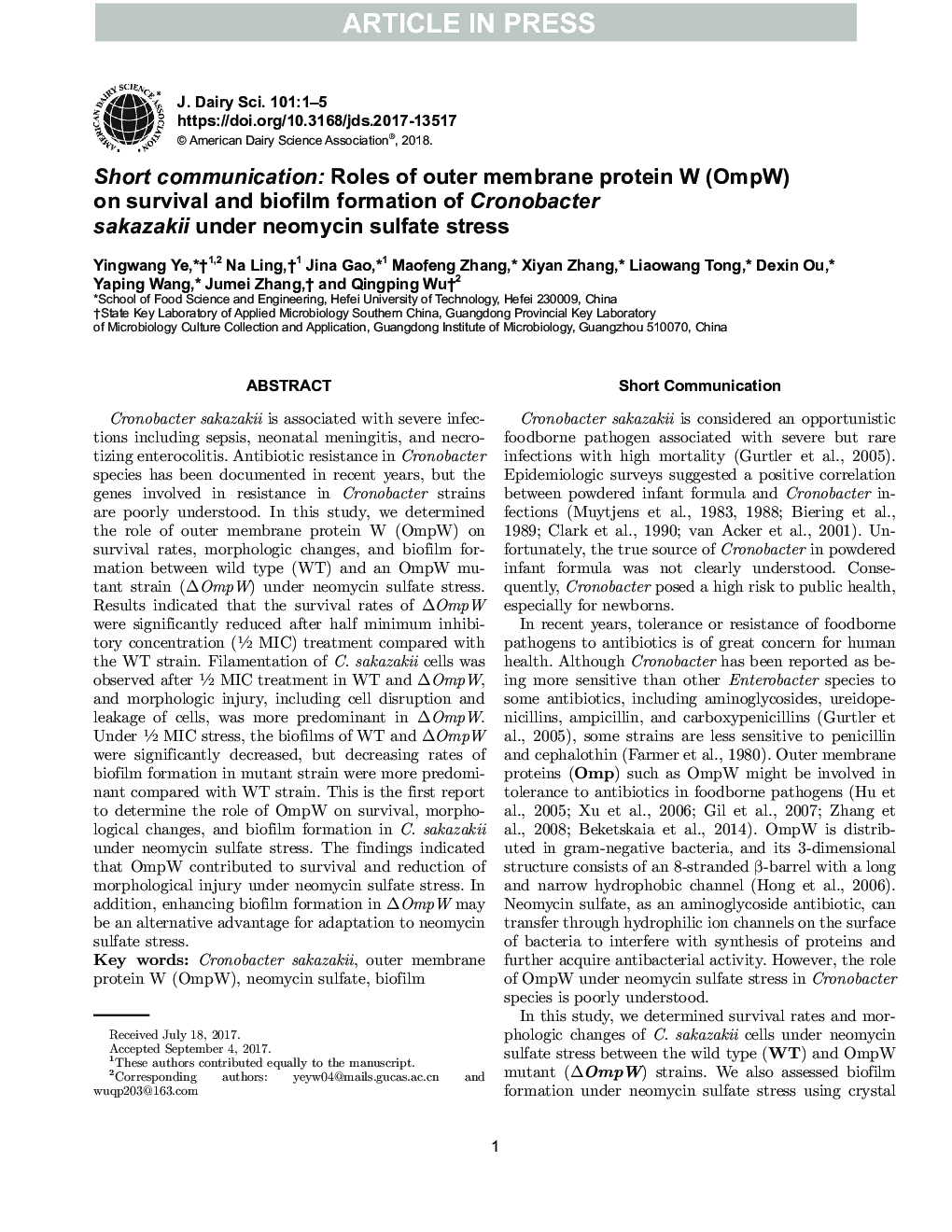| Article ID | Journal | Published Year | Pages | File Type |
|---|---|---|---|---|
| 8501291 | Journal of Dairy Science | 2018 | 5 Pages |
Abstract
Cronobacter sakazakii is associated with severe infections including sepsis, neonatal meningitis, and necrotizing enterocolitis. Antibiotic resistance in Cronobacter species has been documented in recent years, but the genes involved in resistance in Cronobacter strains are poorly understood. In this study, we determined the role of outer membrane protein W (OmpW) on survival rates, morphologic changes, and biofilm formation between wild type (WT) and an OmpW mutant strain (ÎOmpW) under neomycin sulfate stress. Results indicated that the survival rates of ÎOmpW were significantly reduced after half minimum inhibitory concentration (½ MIC) treatment compared with the WT strain. Filamentation of C. sakazakii cells was observed after ½ MIC treatment in WT and ÎOmpW, and morphologic injury, including cell disruption and leakage of cells, was more predominant in ÎOmpW. Under ½ MIC stress, the biofilms of WT and ÎOmpW were significantly decreased, but decreasing rates of biofilm formation in mutant strain were more predominant compared with WT strain. This is the first report to determine the role of OmpW on survival, morphological changes, and biofilm formation in C. sakazakii under neomycin sulfate stress. The findings indicated that OmpW contributed to survival and reduction of morphological injury under neomycin sulfate stress. In addition, enhancing biofilm formation in ÎOmpW may be an alternative advantage for adaptation to neomycin sulfate stress.
Related Topics
Life Sciences
Agricultural and Biological Sciences
Animal Science and Zoology
Authors
Yingwang Ye, Na Ling, Jina Gao, Maofeng Zhang, Xiyan Zhang, Liaowang Tong, Dexin Ou, Yaping Wang, Jumei Zhang, Qingping Wu,
